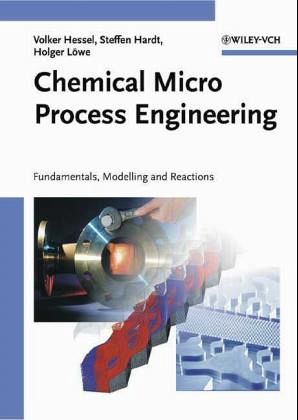Nicht lieferbar

Chemical Micro Process Engineering
Fundamentals, Modelling and Reactions
Versandkostenfrei!
Nicht lieferbar
Micro process engineering is approaching both academia and industry. With the provision of micro devices and systems by commercial suppliers, one main barrier for using these units has been eliminated.This book focuses on processes rather than on devices: what is 'before' and 'behind' micro device fabrication - and gives a comprehensive and detailed overview onA multi-faceted, hierarchic analysis of chemical micro process technology - Modelling and simulation of micro reactors - Liquid- and liquid/liquid-phase reactions - Gas/liquid reactions - Gas-phase reactions (heterogeneous catalysis)
Micro process engineering is approaching both academia and industry. With the provision of micro devices and systems by commercial suppliers, one main barrier for using these units has been eliminated.
This book focuses on processes rather than on devices: what is 'before' and 'behind' micro device fabrication - and gives a comprehensive and detailed overview on
A multi-faceted, hierarchic analysis of chemical micro process technology - Modelling and simulation of micro reactors - Liquid- and liquid/liquid-phase reactions - Gas/liquid reactions - Gas-phase reactions (heterogeneous catalysis)
This book focuses on processes rather than on devices: what is 'before' and 'behind' micro device fabrication - and gives a comprehensive and detailed overview on
A multi-faceted, hierarchic analysis of chemical micro process technology - Modelling and simulation of micro reactors - Liquid- and liquid/liquid-phase reactions - Gas/liquid reactions - Gas-phase reactions (heterogeneous catalysis)



